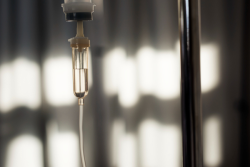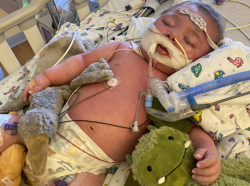It all started in my late teens. Recent high school graduates, my then-boyfriend and I were on our way from O.C. to L.A., when a driver entering the freeway rear-ended us as they were coming off the 91 onramp. A suddenly totaled car and severe case of whiplash quickly changed our prior plans, sending us instead to the local E.R. for immediate medical attention. A series of rush diagnostic tests later, my CT and MRI scans confirmed that I had suffered a C2 cervical neck-spine fracture with lumbar nerve involvement in the collision. I was fortunate to be alive, and luckier still to have survived without brain damage or paralysis, but I would not be simply walking away from this, either. Quite the reverse, it was actually just the beginning of a long battle to come.
Injuries sustained from the crash had triggered a myriad of chronic side effects and secondary conditions, including (but hardly limited to) chronic pelvic pressure, lower back pain, hip misalignment, fatigue, dizziness, and at that time, as-yet “undiagnosed hormonal issues.” I was 19, hurting, scared, and tens of thousands of dollars in debt overnight, due to my emergency room stay, all, through no cause of my own. Having to drop out of college to go through rehabilitative therapy and further hormone assessments over the next couple of years only seemed like more of an end-all to my young future back then. Launched head-first into a cold, cruel world of consistently inconclusive diagnoses and expensive, limited healthcare options, I truly felt the social stigma of being sick and uninsured. Splitting up with my high-school sweetheart a mere few years later, in no small part, because he wanted to have “children of his own”, I also really grew to feel the societal shame of being female and infertile, as well. So, I found myself dually disheartened as my abdominal pain and pressure continued to worsen, going on undiagnosed and untreated clear into my early twenties, despite the ever-growing list of costly blood labs, urinalyses, ultrasounds, and other screening tests, that my doctors had already exhausted.
Even with an employer-provided PPO, it would still be almost five years before any specialist would finally suggest what might be wrong with me (maybe endometriosis, maybe not), or explain what could have caused my prospective condition (maybe trauma from the earlier wreck, maybe not), much less tell me about potential treatments (oral contraceptives, laparoscopy, hysterectomy, or just plain living with the pain and hoping for the best). I was again referred to yet another gynecologist for yet another pelvic sonogram when, at long last, the ultrasound image revealed the suspected endometrial mass, once and for all (or, so we thought). The new gyno’ subsequently diagnosed me with endo’ and put me on low-dose combo estrogen-progesterone birth control pills, taken seasonally, as an alternative to surgery and nerve damage risks. The pill helped relieve some of my symptoms for a while, but it was far from being a permanent cure to my ailment, and ultimately became much more of a curse than a relief to me. Additional complications from an unexpected, ruptured ovarian cyst, followed by an increasingly negative response to the synthetic hormones, also lead to questions about my original diagnosis and method of treatment. Did I have endometriosis at all…was it something else entirely…what do I do now…what do I do next? …













